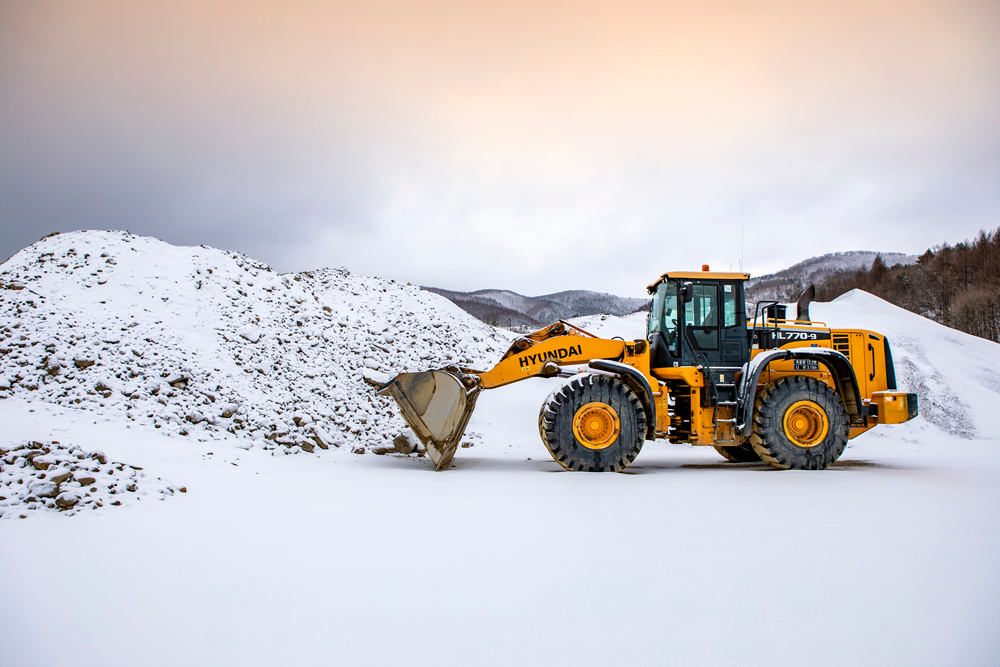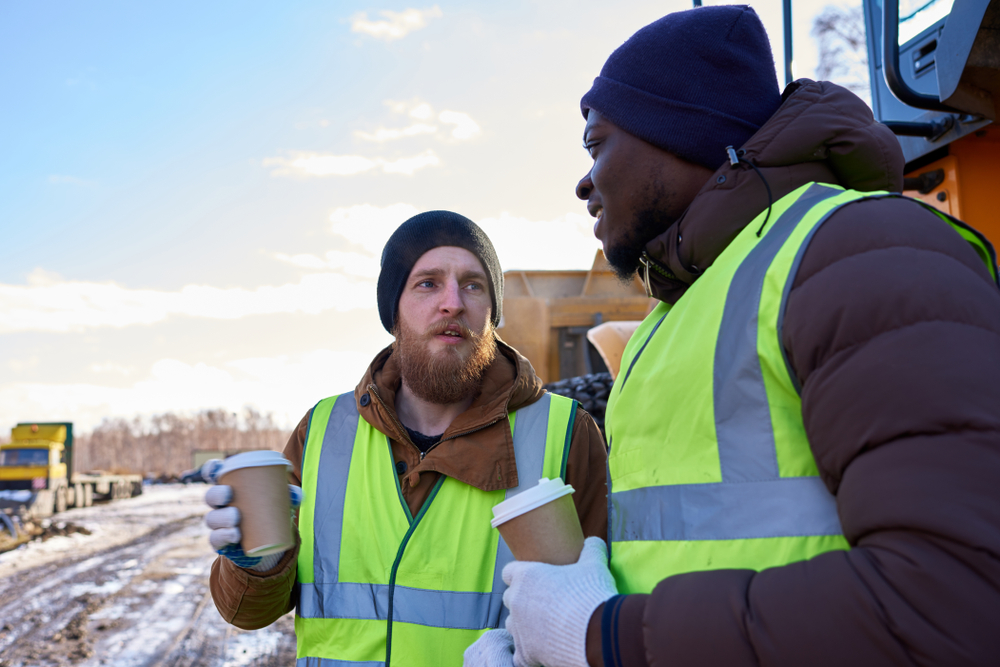When the wind starts howling and the snow descends, not everybody gets to curl up with a cup of coffee and binge watch the latest season of Yellowstone. Plenty of folks are still out there working hard in the cold, keeping the world moving. If that sounds like you, whether you’re a diesel mechanic or a farmer or a construction worker, you need to pay close attention to how you keep yourself warm.
That’s because failing to take the right precautions in the cold can be a matter of life and death. Fortunately, humans have been surviving and working in the cold for thousands of years, so, if our ancestors did it in mammoth skins, you can do it with the advanced winter safety gearavailable today. The secret is to know and apply a few pieces of critical cold weather safety knowledge.
How to Dress in Layers
Layering is one of the most important practices that will keep you warm on a cold workday. Basically, the principle of layering says that rather than wearing one heavier piece of winter workwear, it’s better to wear two or more pieces of more specialized gear that can be removed, added, or swapped out as needed. The basic concept for cold-weather workwear layers looks like this:
- Inner Layer (Moisture Control): The bottom layer of your winter workwear outfit should have a moisture-wicking design. Moisture-wicking helps prevent sweat drying on your skin, which helps keep you more comfortable and protects your body heat.
- Middle Layer (Warmth Control): The middle layer of your outfit will be responsible for keeping warm air in and cold air out. You’ll usually find insulated jackets and liners in this layer.
- Outer Layer (Weather Control): The outer layer should help protect you from environmental conditions like rain, sleet, or snow. You’ll usually want an outer layer with a waterproof design that allows moisture to roll off rather than be absorbed.
Some garments have a multi-layered design that includes features such as snap-in liners. These all-in-one gear designs can offer great value and provide increased flexibility on the job site.

Protecting Your Extremities
Certain parts of your body need special protection when you’re working in the cold. Your head, feet, and fingers, also known as your extremities, are some of the areas most vulnerable to cold, so it’s critical to keep them protected. That means you’ll need three key things in particular: footwear, headwear, and gloves. Let’s take a quick look at what you should look for in each:
- Footwear: Insulated footwear (typically, boots) is incredibly important for keeping your feet warm and dry in rough winter weather. Make sure to get the right size that fits comfortably on your feet, as well as a pair that’s waterproof. Don’t forget a good pair of warm socks, preferably with a moisture-wicking design to help keep your feet dry.
- Headwear: Most workers choose a flexible and comfy piece of headwear such as a beanie or balaclava. The right winter headwear will fit your head comfortably and won’t obstruct your full range of vision.
- Gloves: A good pair of insulated gloves are a must-have for keeping your hands warm on the job site. Workers in certain occupations, such as mechanics and line technicians, may need high-dexterity gloves that offer a flexible design. Other workers may need gloves with built-in grip or cut-resistant material.
Keeping Dry in Winter Weather
In winter, staying dry is a crucial part of staying warm. That’s because moisture on your skin will transfer warmth away from your body, and it can happen while you’re hardly even aware of it.
Remember that moisture-wicking layer we mentioned earlier? A big part of its job is keeping you dry so that you can stay warm. The buildup of moisture that happens as your sweat cools on your skin is a particularly insidious enemy, which is why it’s so important to have your wicking layer there to control it.
In addition, make sure that you change quickly if one of your inner layers gets soaked. Wearing wet clothing in a cold environment puts you at a high risk of hypothermia, a potentially lethal condition.
Caring for Your Body
It’s important to remember to care for your body when you’re working in the cold. By keeping your body as nourished, warm, and well-rested as possible, you’ll help yourself stay productive and healthy. These are some important health and safety best practices to follow when working in the cold:
- Stay hydrated by drinking plenty of water. Dehydration can happen surprisingly quickly in a cold environment.
- Work with a buddy whenever possible and watch each other for signs of hypothermia or frostbite. Check in with each other every 30 minutes to an hour.
- Take breaks as often as you need to. Just as importantly, have a dry and warm place to rest your body during a break.
- Pack some nourishing snacks. Your body uses nutrients more quickly when you’re out in the cold, so it’s crucial to keep yourself fueled with important nutrients like fats and carbohydrates.
- Have a first-aid plan for how you’re going to take action if you notice them in yourself or in a coworker.

Other Gear Considerations
At some cold weather jobs, you’ll need gear that meets other standards in addition to protecting you from the cold. Some types of specialized gear that you might need include:
- High Visibility Gear: Your job may require high-visibility winter clothing compliant with ANSI 107 standards if you work around heavy machinery or roadway traffic.
- FR Clothing: If you work near sources of potentially dangerous heat, you may need FR winter jackets or FR winter pants that are resistant to catching on fire.
- ARC Rated Clothing: Workers who work near equipment that could produce an arc flash may need clothing that’s ARC rated for heat absorption.
Consult your job site safety manual or ask your management which standards your winter clothing needs to be compliant with.
Society owes a great debt to those workers who put themselves on the line in the cold every winter. And if you’re one of those workers, you also owe something to yourself: to take the right precautions to keep your body healthy and protected in the cold.
